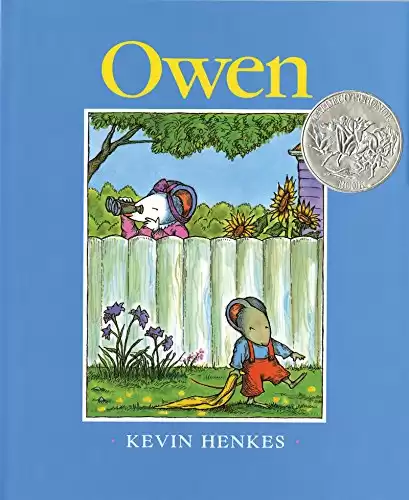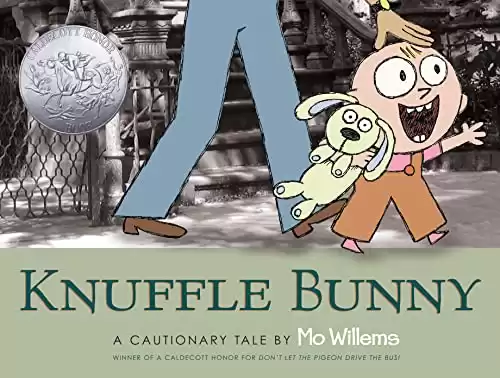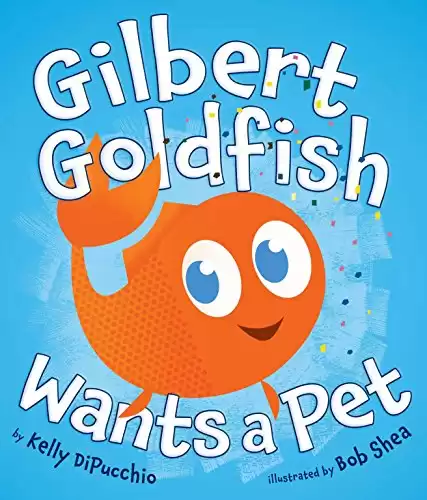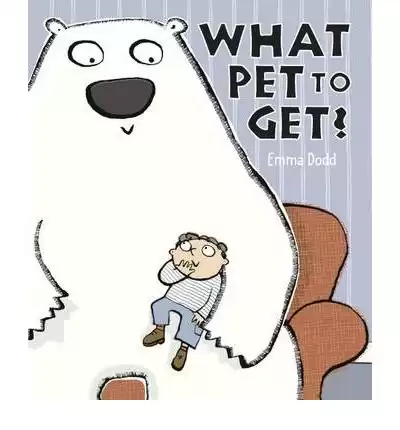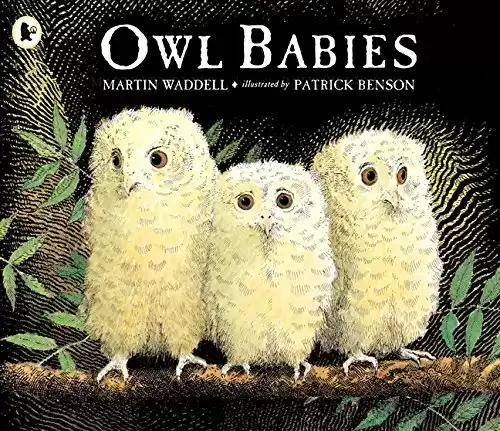Making text connections is a reading comprehension strategy usually taught to elementary students, although little ones start connecting with stories and the real world much earlier.
This blog post will cover different types of text connections and how to help students make meaningful connections. Developing these comprehension strategies will make students better readers and understand the text more deeply.
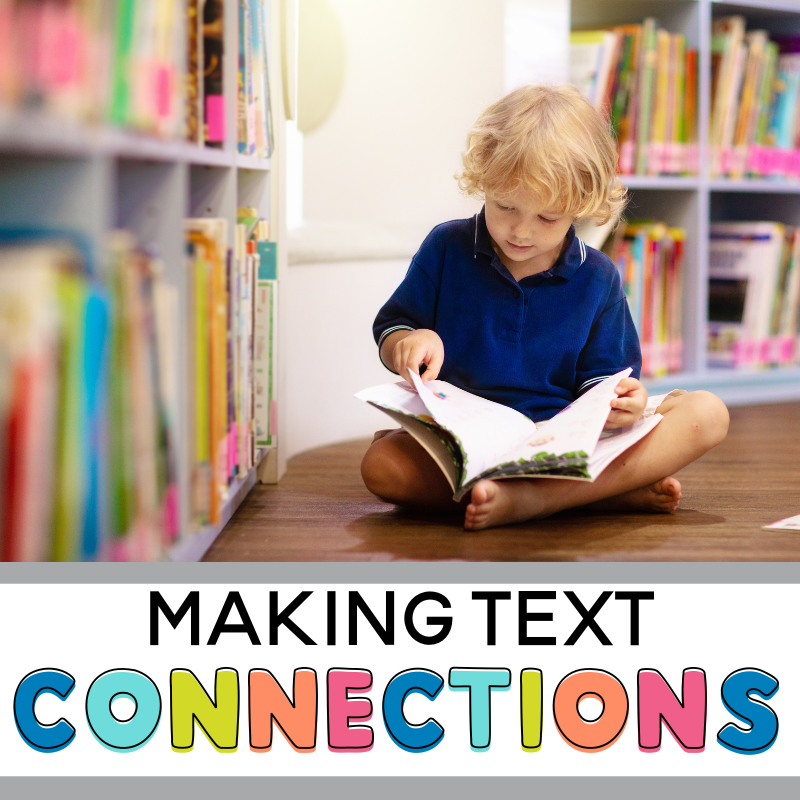
What are the different types of text connections?
There are four different types of text connections that students can make:
- Text-to-Text Connections
- Text-to-Self Connections
- Text-to-World Connections
- Text-to-Media Connections
Each of these text connections will be covered in detail in this post.
When do students start making text connections?
Readers can actually start making text connections with the help of parents, teachers, and caregivers as toddlers! Little ones can often point out familiar things and topics in read-aloud texts from a young age. For example, little ones may remember seeing seagulls on a recent trip to the beach and make that connection with a story being read aloud.
As children have more experiences in their own lives and have more background knowledge, their ability to make text connections will happen on a deeper level.
How do you teach students to start making text connections?
Teaching students to start making connections with texts starts with reading stories aloud and fostering discussions. These skills can be taught in a whole class setting with a story read aloud or could also begin in small groups with guided reading books, etc. Here are a few tools that will help with teaching:
Prompts and Questions
Asking prompts and questions while reading a story aloud can encourage students to think about the text on a more personal level and encourage them to make connections with their real life. The following prompts and questions can be helpful:
- Can you relate to any of the characters in the story? How are they similar to or different from you?
- Have you ever felt the same way as anyone in the story?
- Does this book remind you of any other books or stories that you’ve read?
- Do the events in this text remind you of anything happening in the world today or in the past?
Anchor Charts
Anchor charts are a great tool for making text connections. I always recommend creating anchor charts with your students and displaying them in the classroom. These full-color classroom posters can also be paired with an anchor chart and help to explain the connection to students.
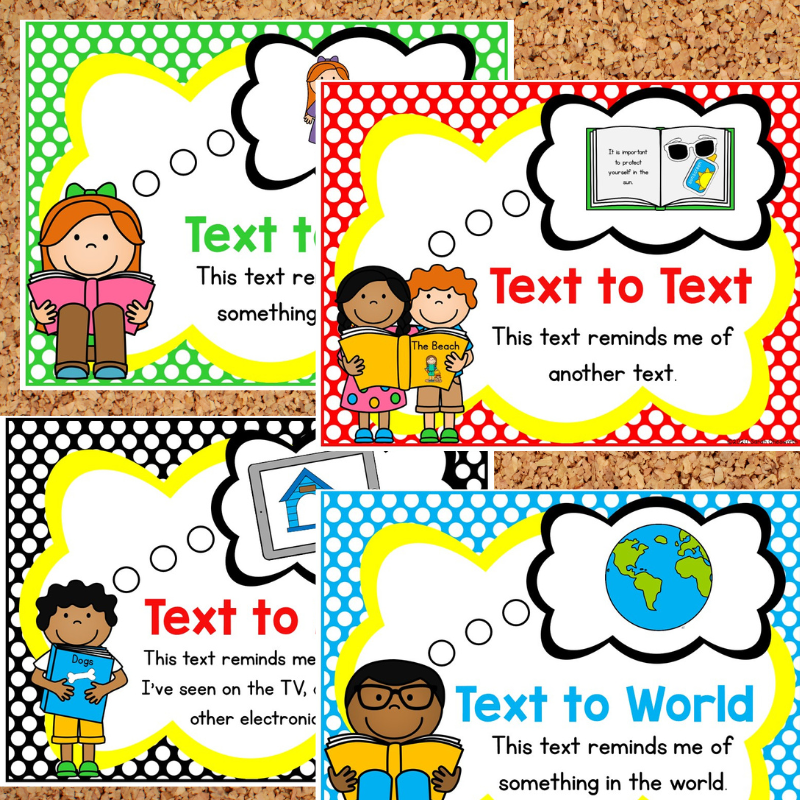
Sentence Stems
Introducing vocabulary for making connections is a huge part of teaching this reading comprehension strategy. Younger students will greatly benefit from having a simple sentence stem to use as they tell the connection that they are making. These full-color classroom posters are helpful for students to explain their thinking.
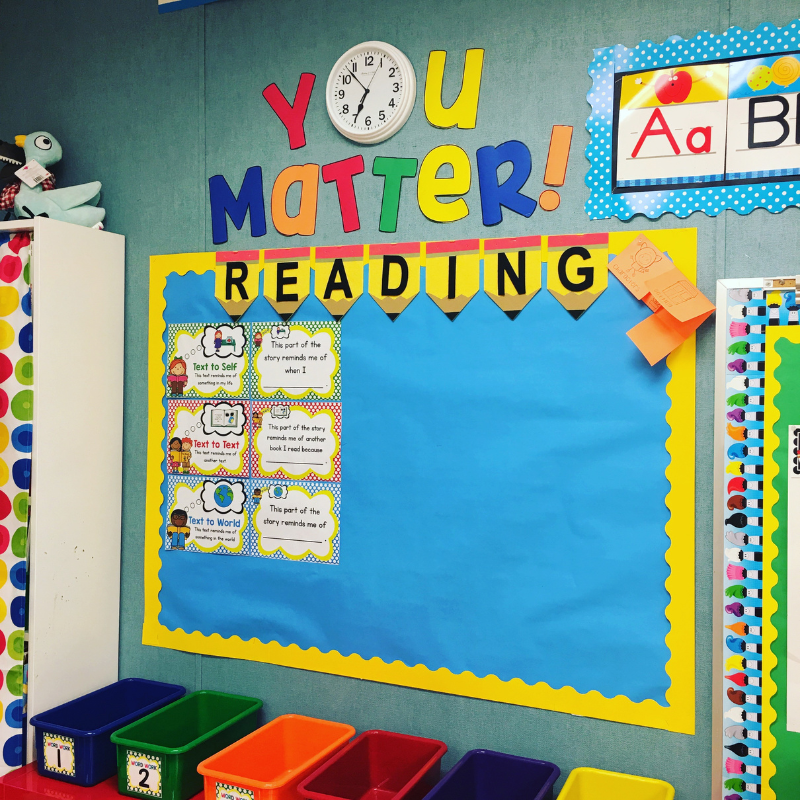
Text Connections Worksheets
These simple response sheets can be used with any book and repeatedly throughout the school year! Students will draw or write what happened in the story and then the connection that they have! It’s a great way to assess who understands the skill and who can take their comprehension to a deeper level! Plus it’s perfect to fold and glue in a reading response journal too!
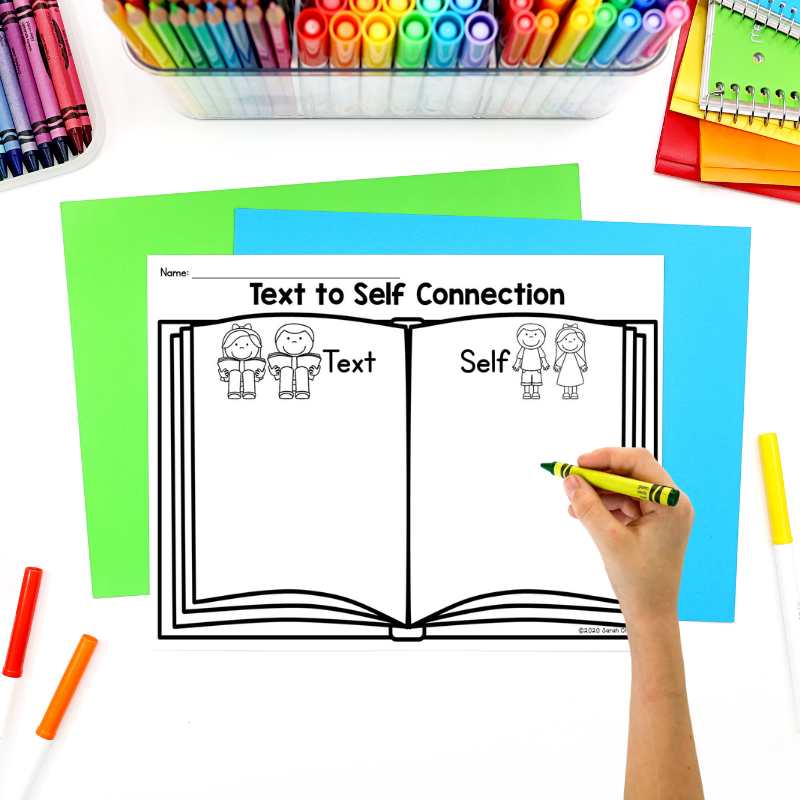
Text-to-Self Connections
A text-to-self connection is a reading comprehension strategy in which a reader relates the content of a text they are currently reading to their own personal experiences, thoughts, or feelings. This connection helps the reader better understand, relate to, and engage with the text by drawing upon their own life. This is usually the easiest type of connection to teach.
Text-to-self connections can take various forms:
Relating to Characters
Readers might connect with characters in the text because they see similarities between the characters’ experiences, emotions, or situations and their own. For example, if a character in the book is dealing with a difficult family situation, a reader who has faced a similar circumstance may make a text-to-self connection with that character.
Emotional Connection
Readers may relate the emotions or feelings expressed in the text to their own emotions or experiences. If the text discusses themes like happiness, sadness, fear, or joy, readers might reflect on their own experiences with those emotions.
Personal Experiences
Readers may draw parallels between events or situations in the text and events or situations from their own lives. This can help readers make sense of the text and deepen their understanding. It can also give them a way to process their own experiences or the feelings of others.
Thoughts and Opinions
Readers might connect with the ideas or opinions expressed in the text by considering their thoughts on the subject matter. For example, students may share a similar opinion as the character in the book. This can lead to critical thinking and reflection.
Books for Teaching Text-to-Self Connections
When you are first teaching this skill, you will want to choose books that have very relatable storylines for your students. At first, the connections will be very surface-level, but as your students become more familiar with making text-to-self connections they will be able to make deeper connections and think more outside of the box. It’s also important to choose a fiction book to foster these connections. You can check out 10 of my favorite books for making text-to-self connections in this post, What is Text-to-Self Connection and 10 Books You’ll Love Teaching With.
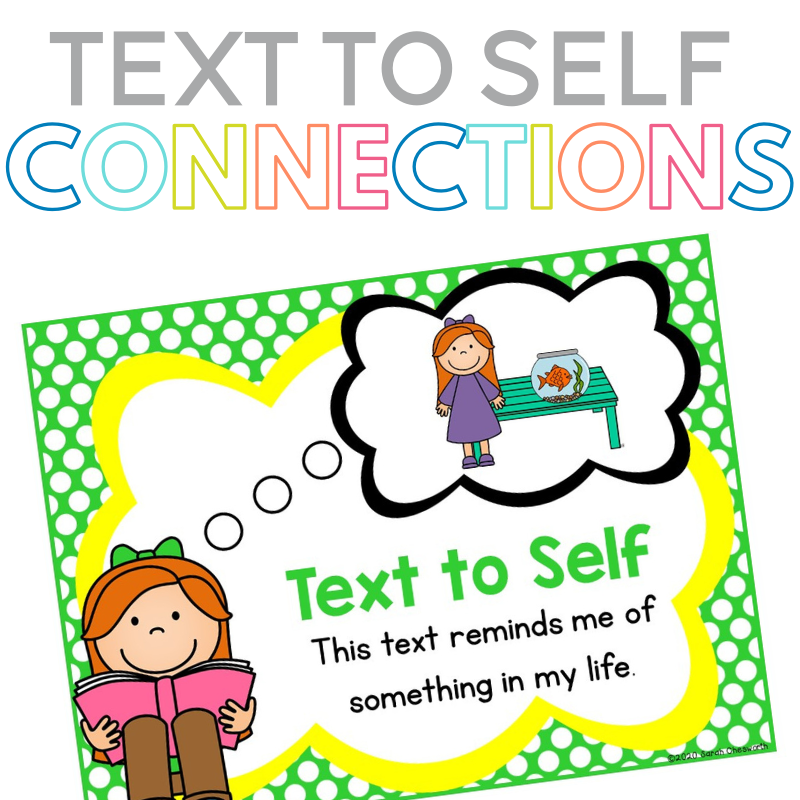
Text-to-Text Connections
A text-to-text connection is a type of reading comprehension strategy where a reader connects the text they are currently reading to another text they have read before. This connection helps the reader better understand and make sense of the current text by drawing parallels or comparisons between the two.
Text-to-text connections can take many different forms and will become more complex as readers develop:
Plot or Storyline
Readers might connect two texts because they share a similar plot, storyline, or theme. For example, they may notice that the characters in the current book face similar challenges or conflicts as characters in a previously read book.
Character
Readers may connect two texts when they find similar or contrasting character traits, personalities, or developments in characters from different books.
Setting
If the settings in two texts are similar or have something in common, readers can make connections between them. This could be the time period, location, or overall setting of the story.
Theme or Message
Sometimes, readers connect texts because they both convey a similar lesson, moral, or message. This can help readers deepen their understanding of the theme.
Author’s Style
Readers might notice similarities or differences in the writing style or techniques used by the same author in multiple works. This can lead to connections about an author’s signature style.
Text-to-text connections are valuable because they enhance comprehension and critical thinking skills. They allow readers to draw upon their prior knowledge and experiences to make sense of new material, which can lead to a deeper understanding of the text. When you first teach this strategy to students, it can be helpful to purposely choose two books and help students make connections between the two as a whole class.
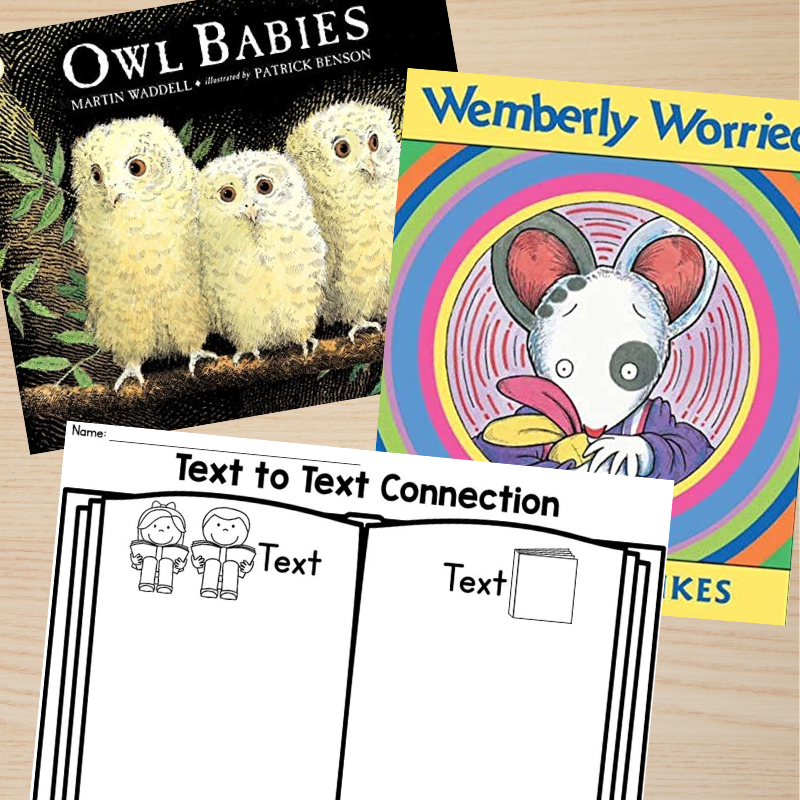
Books for Teaching Text-to-Text Connections
When you first teach this strategy to students, it can be helpful to purposely choose two books and help students make connections between the two as a whole class. Here are a few books I like to use as I teach this connection.
In both of these books that characters have an object that they are very attached to.
Characters in both of these books want a pet and contemplate all of the different pet options and what might be best!
Characters in both of these books experience worry.
Text-to-World Connections
A text-to-world connection is a reading comprehension strategy where a reader relates the content of a text they are currently reading to broader events, concepts, or issues in the real world or society at large. This type of connection helps the reader understand how the text fits into a larger societal or global context.
This is a great connection for integrating social studies concepts and real events. Choosing an informational text to develop these ideas can also be helpful.
Text-to-world connections can take various forms:
Current Events
Readers may connect the events or themes in the text to current news or events happening in the world. This connection allows readers to see how the text’s content relates to real-world issues or situations.
Historical Context
Readers might relate the text to historical events, periods, or societal changes. This can help readers understand how the text reflects or comments on historical contexts.
Cultural or Social Issues
Text-to-world connections can involve linking the text to broader cultural or social issues, such as gender roles, diversity, inequality, or environmental concerns. Readers can consider how the text addresses or sheds light on these issues.
Global Perspectives
Readers may connect the text to global perspectives, considering how the themes or messages in the text have relevance beyond a specific geographic location or culture.
Universal Themes
Some texts contain universal themes that resonate with people from different parts of the world. Readers can make connections to these themes and consider how they apply to humanity as a whole.
Text-to-world connections are valuable because they encourage readers to think critically about the text’s significance beyond its immediate story or content. This strategy can enhance comprehension by helping readers relate the text to their own lives and the larger world around them. This can be one of the harder text connections to teach.
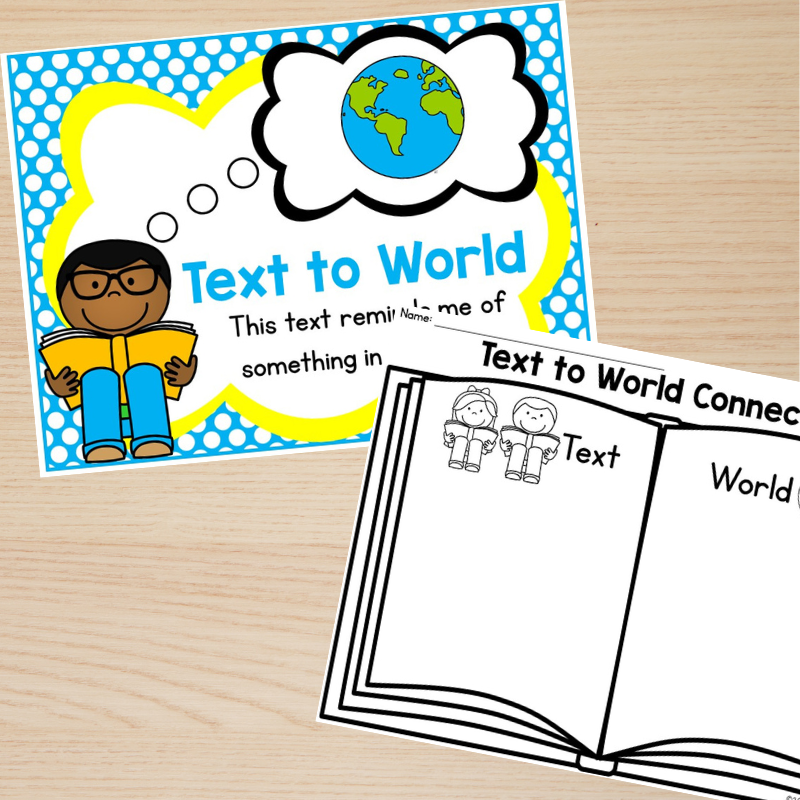
Books for Teaching Text-to-World Connections
This can be the hardest text connection to teach because it depends on students having an understanding of the bigger world around them. Younger students sometimes have a hard time thinking of the big picture and the whole world, but here are a few books to help!
Students can think about brave people in the world such as firefighters and police officers.
Students can think about the president of our country and the jobs that come with that. What other leaders are there in the world?
Text-to-Media Connections
A text-to-media connection is a reading comprehension strategy in which a reader relates the content of a text to various forms of media, such as movies, television shows, music, art, etc. This connection helps the reader understand how the text’s themes, characters, or messages may have been adapted or represented in different media formats.
Text-to-media connections can take several forms:
Film or Television Adaptations
Readers may connect a book they’ve read to a movie or TV adaptation of the same story. This can involve comparing and contrasting how the book and the TV show/movie portrays characters, settings, and events.
Music
Some readers connect a text to songs or music that they feel relates to the themes, emotions, or messages conveyed in the text. They may consider how lyrics describe a similar situation or feeling in a book.
Art and Illustrations
When reading picture books, graphic novels, or texts with visual elements, readers can connect the text to the illustrations or artwork. They might analyze how the visual elements enhance or complement the written content.
Social Media and Online Discussions
Readers may connect the text to discussions, reviews, or analyses of the text they find on social media platforms, blogs, or online forums. This can help them see how others interpret and engage with the same material.

Making Text Connections

Making text connections is an important reading comprehension skill that students will continue to develop throughout their reading careers.

